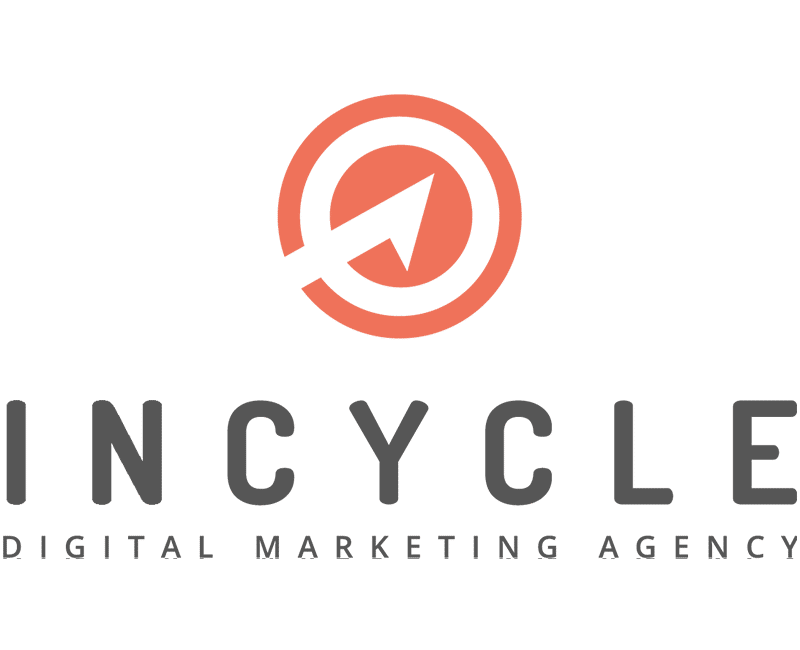When It Comes To Digital Marketing Results, Everyone Is In A Hurry.
Digital marketing results can seem like elusive things. It makes sense, but you should be aware that results will not show immediately. Anyone can manipulate links, automate articles, or use other black-hat search engine optimisation tactics to acquire temporary results.
But that is not exactly what you want. You need real customers, actual conversions, and actual earnings; and digital marketing is one of the most valuable areas you can invest in to achieve those.
So, here’s what you want to know about seeing real, meaningful, and lasting results.
It Is Not Overnight. It Is In-It-For-The-Long-Haul Advertising.
Digital marketing efforts take time and expertise. Best practices concentrate on long-term strategies rather than quick fixes–meaning that you need to be ready to invest in your organisation’s future.
Any SEO or digital marketing agency that’s promising quick repairs and faster results is probably making promises they can’t keep or employing black-hat search engine optimization tactics that could lead to your site being penalised by search engines.
It May Take Months To Start Getting The Results From Your Digital Marketing Efforts.
You need to stay with a digital marketing and advertising strategy for about six to twelve months before you begin to see meaningful results. It may take even longer if you aren’t fixing all aspects of your website (from backlinks to content to user experience), submitting often, or providing high-quality articles. Read our guide to getting results with digital marketing companies in Dubai to learn more about seeing ROI.
The Duration It Takes To Get Results Depends On Several Elements.
Where you begin, your industry, your competitors, your budget, and your digital advertising focus regions can all have a big impact.
Where You Start
You’ve got a reputation with Google, and based on what that standing is, it may have a long time to construct or rebuild your confidence and credibility. You can not change your reputation overnight.
SMART Objectives
 The importance of goal setting can never be over-emphasized. Your goals must be Specific, Measurable, Attainable, Relevant, and Time-bound. These are the kind of goals you should set if you hope to observe effects.
The importance of goal setting can never be over-emphasized. Your goals must be Specific, Measurable, Attainable, Relevant, and Time-bound. These are the kind of goals you should set if you hope to observe effects.
Do you desire to increase sales by 30% by the end of the year? Would you like subscribers to double up over four weeks? Would you wish 2000 website traffic by the end of the year? All of these are examples of SMART goals.
To put it differently, if your goals are SMART, you’re more likely to see effects.
Business and Competition
 If your opponents have a solid online presence, it is going to be harder for you to outrank them. Further, if your competition is making changes online, good or bad, it may impact your business’s rankings and traffic. You don’t need to be flawless; you simply have to be better than your competitors. If your company has a poor service or product, your online marketing and advertising efforts will most likely be unsuccessful. On the flip side, if you have a fantastic service or product, digital advertising can help you find and convert new audiences.
If your opponents have a solid online presence, it is going to be harder for you to outrank them. Further, if your competition is making changes online, good or bad, it may impact your business’s rankings and traffic. You don’t need to be flawless; you simply have to be better than your competitors. If your company has a poor service or product, your online marketing and advertising efforts will most likely be unsuccessful. On the flip side, if you have a fantastic service or product, digital advertising can help you find and convert new audiences.
Budget
 This point should not be overlooked. Far too often businesses vastly underestimate their marketing budget, or subsequently massively overestimate their budget capabilities. Many companies underestimate how much time and money it requires to succeed with digital advertising. Higher funding means more time spent on digital marketing efforts, and the more you put in, the quicker you will see results.
This point should not be overlooked. Far too often businesses vastly underestimate their marketing budget, or subsequently massively overestimate their budget capabilities. Many companies underestimate how much time and money it requires to succeed with digital advertising. Higher funding means more time spent on digital marketing efforts, and the more you put in, the quicker you will see results.
All too often companies will expect extremely quick and outstanding results, yet are not prepared to invest the money that is required. They may also be unwilling to accept that digital marketing services are a viable and important aspect on marketing in today’s world. Therefore, professionals must be paid to manage it in order to achieve optimum digital marketing results.
You must work with your existing resources or speak with marketing professionals to learn more about what your company budget can afford.
Areas Of Focus
 Digital advertising is a long-term commitment, irrespective of your focus areas. This is because one kind of support is just not enough. As you may see quicker results with pay-per-click (PPC) campaigns compared to SEO, you eliminate all that business as soon as you stop PPC. In other words, the ever-changing digital marketing ecosystem requires an expansive approach.
Digital advertising is a long-term commitment, irrespective of your focus areas. This is because one kind of support is just not enough. As you may see quicker results with pay-per-click (PPC) campaigns compared to SEO, you eliminate all that business as soon as you stop PPC. In other words, the ever-changing digital marketing ecosystem requires an expansive approach.
When you finally begin seeing digital marketing results and accomplishing your goals, you can’t let up or go back to your old ways. Rather, keeping your online presence requires a dedication to the constant implementation of your digital marketing strategy.
An effective digital marketing strategy documents and measures goals, and if these goals are met, new goals are set. It’s a recursive procedure, and an investment in the long-term wellbeing of your company’s online presence.
Content Quality
Your content should be valuable, interesting and crafted with purpose. It should help to add to your potential customer’s objectives and drive them to take action. Without these three, key things, your content is simply taking up space. Write about the things your buyer personas are interested in. This will draw them towards you.
Frequency
You can’t post 1 blog post and anticipate the sales to come rolling up in. Beginning anything from the ground up takes time and consistency. Content promotion is a strategic and long-term plan. You need to be well prepared and committed to generating content frequently to observe effects.
Other Advertising And Marketing Initiatives
Inbound marketing is most effective when it is used in conjunction with other digital marketing initiatives, such as social media, paid advertisements, and SEO. For example, if you just have 200 followers on Facebook, posting a status or sharing a blog post is not likely to achieve very far past your first Insights foundation. But if you market your company or the individual article using paid advertising, abruptly, your articles reach a much wider pool of people.
Paid Search Timetables
 If you understand what you are doing with PPC and goal active keywords, you will see traffic increases almost instantly after you place your bid rates. Of course, this is the basics of PPC, and if you do not continuously monitor the operation and remove non-performing advertisements, you’ll quickly find yourself losing a great deal of cash.
If you understand what you are doing with PPC and goal active keywords, you will see traffic increases almost instantly after you place your bid rates. Of course, this is the basics of PPC, and if you do not continuously monitor the operation and remove non-performing advertisements, you’ll quickly find yourself losing a great deal of cash.
As stated above, whenever you make a change, you will notice a downtick more than anything – this should be accompanied by several weeks of rebuilding prior to conversions, earnings, and profits skyrocket. If you’re beyond the one-year mark and are not seeing any improved outcomes, it could be time for you to consider hiring an outside agency or adviser (or firing your present one to come across another). A comprehensive examination of your current processes is needed to make certain that there aren’t additional reasons for the lack of results before making any changes.
After about six months of regular and consistent care, any PPC campaign can start bringing in revenue that surpasses the cost of bidding.
SEO Timetables
 PPC and SEO campaigns can and ought to target the same keywords. As soon as you stop paying for clicks in a PPC campaign, you eliminate all that company. The fall is easier to take if you are on the very first page of search results, but you’ll still lose some clicks. Apart from being more sustainable, SEO also lets you broaden your attempts into long-tail keywords, which are important to understand in inbound marketing.
PPC and SEO campaigns can and ought to target the same keywords. As soon as you stop paying for clicks in a PPC campaign, you eliminate all that company. The fall is easier to take if you are on the very first page of search results, but you’ll still lose some clicks. Apart from being more sustainable, SEO also lets you broaden your attempts into long-tail keywords, which are important to understand in inbound marketing.
The major distinction between SEO and PPC is the total amount of time that it takes to start building outcomes. Once you collect enough information on your landing pages to satisfy enough long-tail keywords, you are less than a year away from starting to generate the sort of results you pay to jumpstart with PPC.
In 2014, Search Engine Journal printed a case study suggesting it should take about four to six months to determine 100 or more organic search results every day. It’s actually sales being driven that matters. One qualified and converted lead is significantly more valuable than 100 visitors who browse and bounce. A hectic day is great, but a hectic day with a bulging cash register is even better.
This is why so many businesses include content marketing as part of the search engine optimisation initiatives.
Content Marketing Timetables
 Unlike PPC and other search engine optimisation purposes, which can be “set and forget” functions, content marketing takes a continuous focus on content creation, which can often require huge operations.
Unlike PPC and other search engine optimisation purposes, which can be “set and forget” functions, content marketing takes a continuous focus on content creation, which can often require huge operations.
A recent study found businesses that site 20 times every month or more get 5 times more visitors than those who blog 4 or less.
Posting regularly, at least 12 quality posts a month can start generating results within 6-9 weeks, with 400 posts being sufficient to sustain the traffic. This presumes the content in your content strategy is solid. With more people performing more hunts in natural language (often using voice supporters such as Siri or Cortana to do it), your very best choice at being seen is to ensure all content is extensive, comprehensive, and filled with longtail queries.
Other kinds of content marketing, like events, webcasts, social networking, published materials, and much more can all reach unique audiences and should have precisely the exact same target range of 6-9 weeks to see quantifiable outcomes.
Appropriate SEO and content marketing is another key in content marketing success, as even the very best content doesn’t always get noticed.
Yet again, if you don’t see results over a calendar year, it may be time to reconsider your content marketing efforts and focus more on social networking marketing.
Social Networking Timetables
 There are few better platforms to gain internet popularity than social media, where anyone from the average Joe to stars, small businesses, and major corporations has an equal shot at creating waves.
There are few better platforms to gain internet popularity than social media, where anyone from the average Joe to stars, small businesses, and major corporations has an equal shot at creating waves.
Improving search ranking and raising both site traffic and sales prospects may be achieved through social network marketing, but nearly all companies see social networks as valuable platforms to raise awareness. Since awareness is the main objective of social media, your following and stocks are a great measurement of how well word-of-mouth is spreading.
Beyond that, as HubSpot shows, it can be very hard to pinpoint exact timeframes for social media outcomes.
Now, you could buy 20,000 followers and also make it look as if you are a social networking rockstar, but it will just be you talking to an empty area.
Don’t buy followers. It just isn’t worth it.
When employed actively and properly, there is no reason you shouldn’t be able to get at least 100 real followers on any given social networking website within six months
McDonald’s, as an example, has more Twitter followers compared to Burger King, which translates for their popularity.
CRO Timetables
All your online efforts must be focused around a conversion rate optimisation plan.
Optimising your pages for search and getting it in front of people through blogging or sponsorship doesn’t help if no one converts.
Bounce rates along with other key KPIs for conversion rates will probably occur as the previously stated initiatives start generating leads for your site to convert. Keep everything simple and following basic customer mindsets to make the most of your web optimisation efforts.

Every change you make in your digital advertising department should be backed with both sound data and A/B testing. Rather than making changes based on hunches or personal preferences, A/B evaluations present both sides to demonstrate the entire story.
There are loads of errors to be made from A/B testing though, and they’re quite common. Prevent these mistake and be sure you’re constantly focused on enhancing the bottom line. With correct procedures and a data-driven approach to inbound marketing, it is less of a guessing game and more about educated and informed approaches being executed.
There’s a real world beyond the digital one, and you’ll still require a hustle and grind on the real roads to supplement your own digital advertising efforts, but the Web does matter.
As soon as it’s merely a sampling of your full customer base (unless you’re online-only), information analytics are very beneficial in retargeting along with other initiatives meant to constantly improve the ROI of your digital marketing plan.
It Is Dependent Upon Where You Start
 A business with only a few hundred fans across all social networking platforms won’t see an immediate boost. A company with 10,000 enthusiasts and an already existing social networking strategy will most likely see expansion off the bat, thanks to that solid foundation. The same goes for the magnitude of an existing contact list.
A business with only a few hundred fans across all social networking platforms won’t see an immediate boost. A company with 10,000 enthusiasts and an already existing social networking strategy will most likely see expansion off the bat, thanks to that solid foundation. The same goes for the magnitude of an existing contact list.
The wonderful thing about inbound marketing is that it’s equally as important to businesses with a small following as it would be to companies with a sizable following. If you are starting out small, you just have more room to grow. And you could realize that you have more meaningful engagement with your existing fans.
But you’re not likely to see company expansion instantly, and if you’re simply relying on social networking, you’re swiming against a tide.
Digital Marketing Results Aren’t Easy To Come By
 If anyone tells you that inbound marketing is easy, they are sugarcoating reality. The truth is, inbound advertising takes a tremendous amount of work. It’s a strategy of cause and effect. The more content you print, the greater your fan base develops. Since your fan base grows, your prospects will increase. Fresh content boosts SEO.
If anyone tells you that inbound marketing is easy, they are sugarcoating reality. The truth is, inbound advertising takes a tremendous amount of work. It’s a strategy of cause and effect. The more content you print, the greater your fan base develops. Since your fan base grows, your prospects will increase. Fresh content boosts SEO.
As an inbound marketer, your function is to cultivate and nurture these routines. Successful inbound marketing relies heavily on consistently engaging in tested methods, like content creation and email nurturing. And you can not cut corners. Should you slack on the campaign, it is going to take significantly more time to see results.
Inbound Marketing Is A Lengthy Game
Ultimately the question that you should be asking isn’t how quickly it works, but what steps will be taken to achieve results. Inbound marketing is all about continuing strategy.
Inbound advertising measures goals, and if those goals are attained, new goals are set. We typically look at development month by month, together with deeper investigation conducted in quarterly and yearly factors. Google Adwords and paid social placements helps boost more instant results so long as you’re driving traffic to thoughtful, relevant landing pages.
 When we discuss the deadline of content promotion outcomes, it’s also important to mention that outcomes usually don’t hit all at one time. Results occasionally come in waves.
When we discuss the deadline of content promotion outcomes, it’s also important to mention that outcomes usually don’t hit all at one time. Results occasionally come in waves.
Results may spike, decline, then grow gradually with time. As with the case we mentioned earlier, our customer saw a substantial spike in traffic at the launch of its content effort. The visitors dropped shortly afterward but then started climbing, steady and slow, to provide both short-term and lasting results.
Digital marketing results will take place at different times. Throughout your campaign, results may show at different intervals of time.
Throughout the first six months, you will likely see results like:
- Greater traffic
- Higher rates of social sharing
- More backlinks
- A spike in PR mentions
And over time, you will see other advantages such as:
- Sustained traffic increases
- Higher search rankings
- More conversions
However, with patience and consistency, you can launch a content marketing strategy that will grow and create valuable, lasting results over time.
Desire A More Specific Response?
Do not expect to see substantial change until at about six months to your inbound marketing efforts. At that point, the basis for future growth will likely be set up.
As you set out on an inbound marketing plan, avoid the urge to camp outside on your stats dash, anxiously waiting for increased site traffic and prospects. Take all that eagerness and use it as inspiration to create purposeful, shareable content which relates to your ideal clients. The rest will fall in to place.
When Digital Marketing May Not Work
Digital marketing is not suitable for every company; it can not cover up defects or problems within your business or business model. Spend some time working on your organization, rethink your service, and improve your customers’ experience before investing in marketing and advertising. If you have a fantastic product or service, then internet marketing can help you to find and convert new audiences.
Conclusion
The actual timeframe it takes to see digital marketing results varies. This can be anywhere from 6-months to 1 year plus. It all depends on your specific business position. One this is for sure, it will not be within the first month of you undertaking and digital marketing, nor will your agency be able to provide you any assurances of success before 6-months either.
Ultimately, it comes down to how much budget you are willing to invest and how much work you want to put it. In general the rule of thumb is the more you put in, the more you get out in a shorter time.










